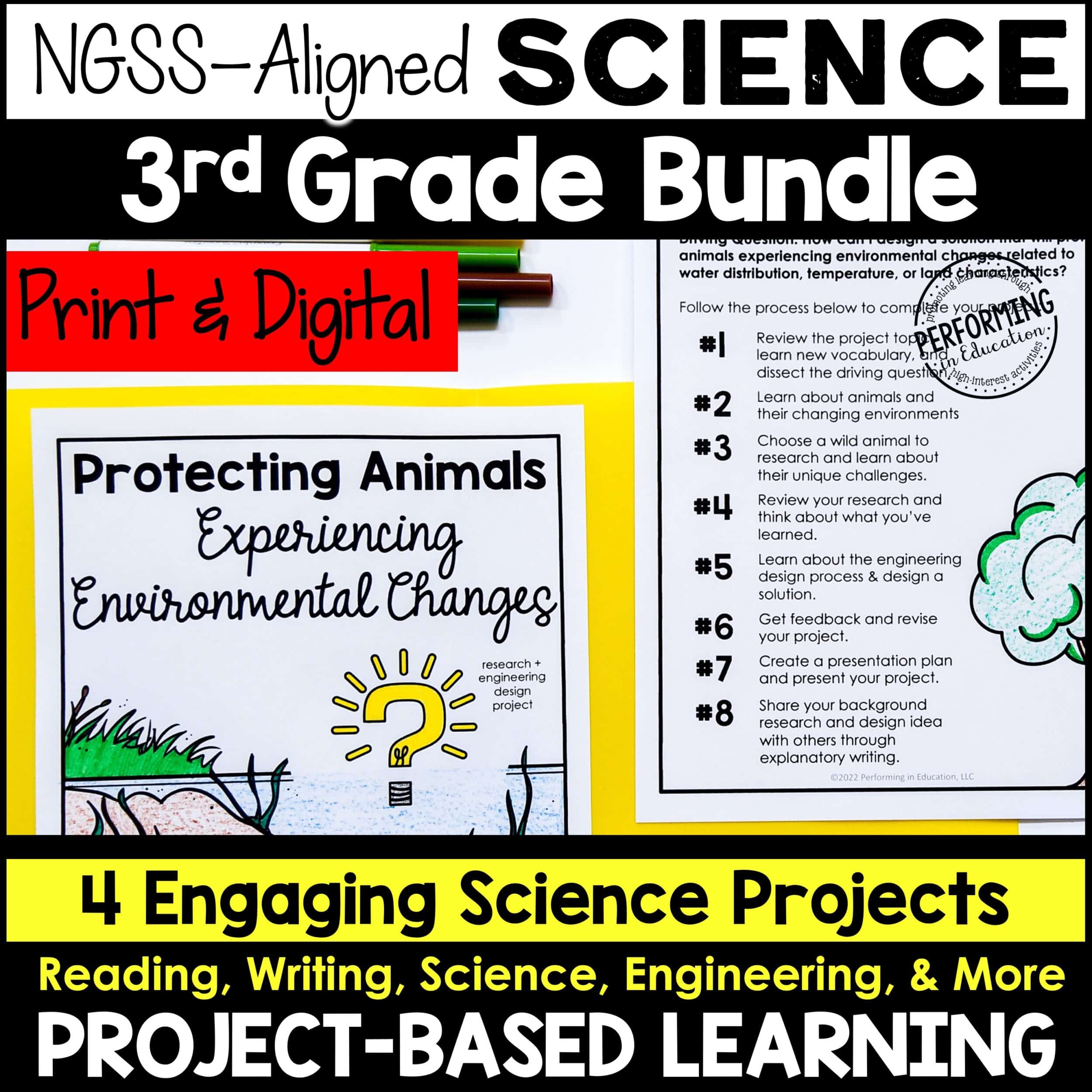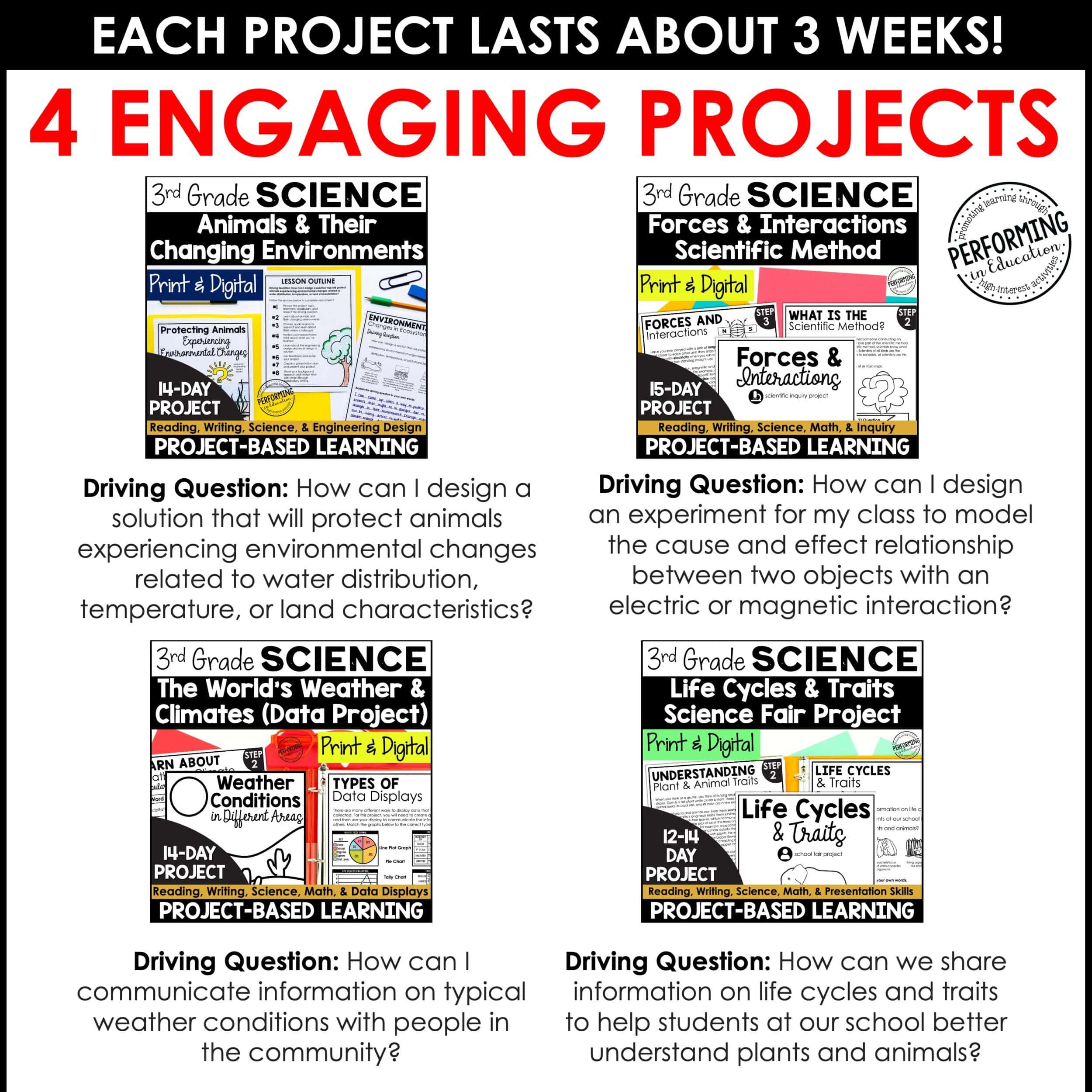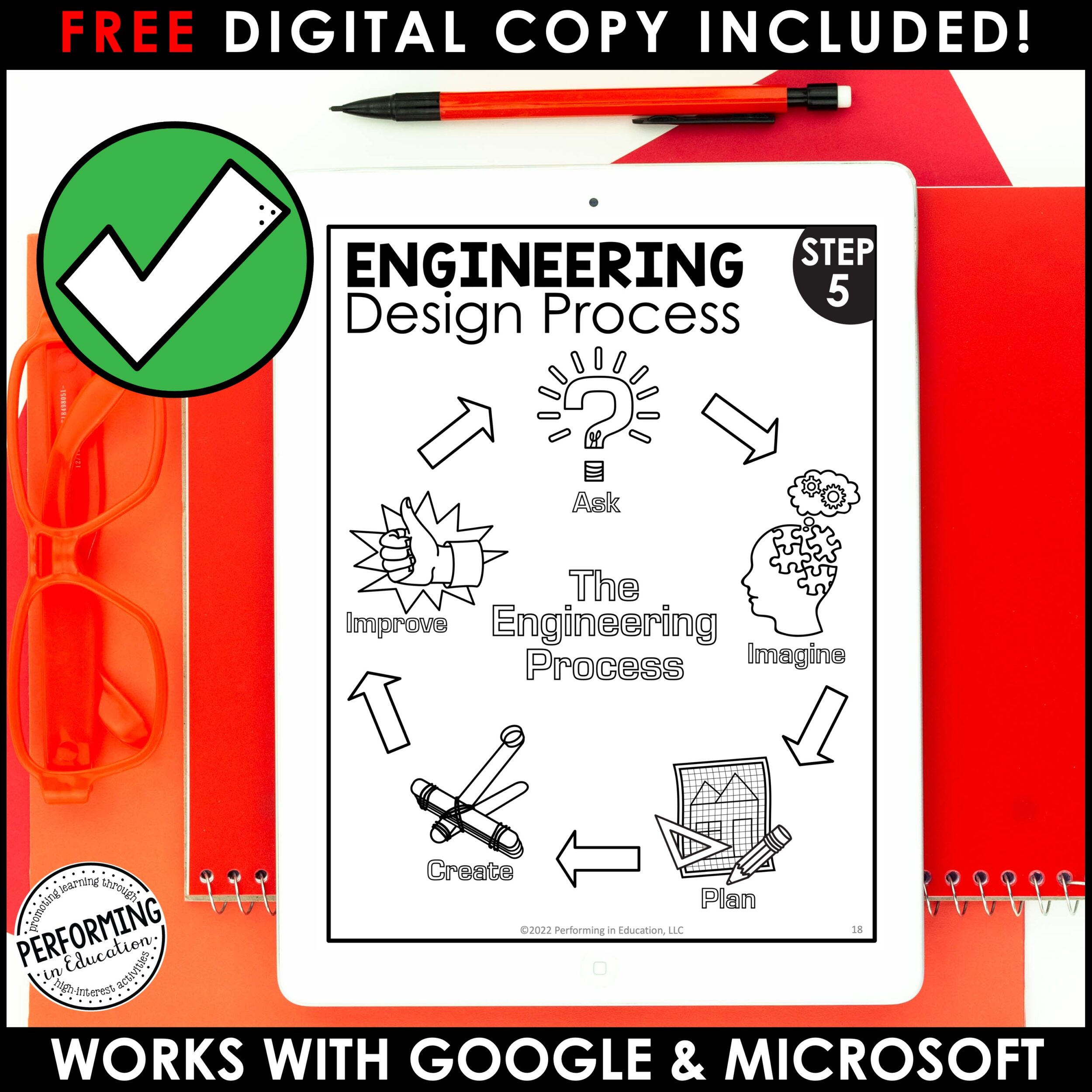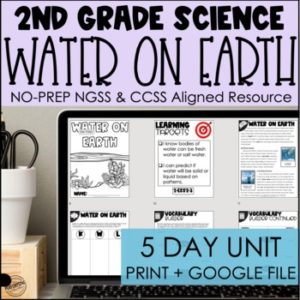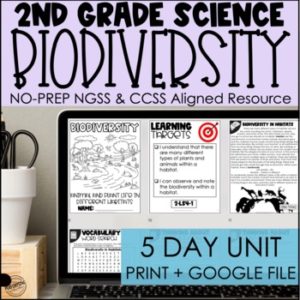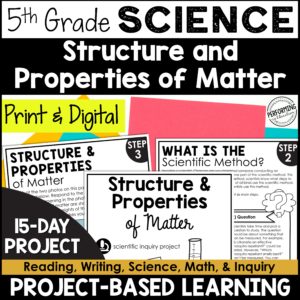This is a bundle of 4 PBL science units for 3rd grade. These 3-week project-based learning (science-focused) research-based units are the perfect way to teach reading, writing, research skills, and science in one engaging, real-world unit. Your students will use key standards, such as research, reading comprehension, and engineering design in a real-life scenario. The best part about PBL is that student choice and differentiation are built in!
3rd Grade Driving Questions:
- How can I communicate information on typical weather conditions with people in the community?
- How can I design a solution that will protect animals experiencing environmental changes related to water distribution, temperature, or land characteristics?
- How can I design an experiment for my class to model the cause and effect relationship between two objects with an electric or magnetic interaction?
- How can we share information on life cycles and traits to help students at our school better understand plants and animals?
Banish those boring worksheets and get your students excited about real life learning! These projects cover the following skills:
- Research
- Reading Comprehension
- Collaboration
- Communication
- Writing
- Design & Creativity
- Critical Thinking
- Engineering Design Process
- Data Displays
Included in this Resource:
- Lesson Outline
- Sample Pacing
- Teacher Guide with Lesson Plans
- Scaffolded Research Notes
- Engineering Design Process Overview
- Graphing Instruction & Practice
- Explanatory Writing
- Opinion Writing
- Compare and Contrast Writing
- Informative Writing
- Science Fair Projects
- Scientific Inquiry
- Rubric & Sample Answers
Plus, a BONUS digital version is included as well!
NGSS Standards Covered:
- NGSS3-5-ETS1-1 Define a simple design problem reflecting a need or a want that includes specified criteria for success and constraints on materials, time, or cost.
- NGSS3-5-ETS1-2 Generate and compare multiple possible solutions to a problem based on how well each is likely to meet the criteria and constraints of the problem.
- NGSS3-LS4-4
Make a claim about the merit of a solution to a problem caused when the environment changes and the types of plants and animals that live there may change. Examples of environmental changes could include changes in land characteristics, water distribution, temperature, food, and other organisms. Assessment is limited to a single environmental change. Assessment does not include the greenhouse effect or climate change. - 3-ESS2-1: Represent data in tables and graphical displays to describe typical weather conditions expected during a particular season.
- 3-ESS2-2: Obtain and combine information to describe climates in different regions of the world.
- NGSS.3-PS2-1: Plan and conduct an investigation to provide evidence of the effects of balanced and unbalanced forces on the motion of an object.
- NGSS.3-PS2-2: Make observations and/or measurements of an object’s motion to provide evidence that a pattern can be used to predict future motion.
- NGSS.3-PS2-3: Ask questions to determine cause and effect relationships of electric or magnetic interactions between two objects not in contact with each other.
- NGSS.3-LS1-1: Develop models to describe that organisms have unique and diverse life cycles but all have in common birth, growth, reproduction, and death.
- NGSS.3-LS3-2: Use evidence to support the explanation that traits can be influenced by the environment.
Copyright © April Smith (Performing in Education). All rights reserved by author. This product is to be used by the original downloader only. Copying for more than one teacher, classroom, department, school, or school system is prohibited. This product may not be distributed or displayed digitally for public view. Failure to comply is a copyright infringement and a violation of the Digital Millennium Copyright Act (DMCA). Clipart and elements found in this PDF are copyrighted and cannot be extracted and used outside of this file without permission or license. Intended for classroom and personal use ONLY.
